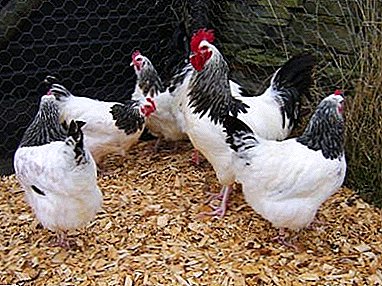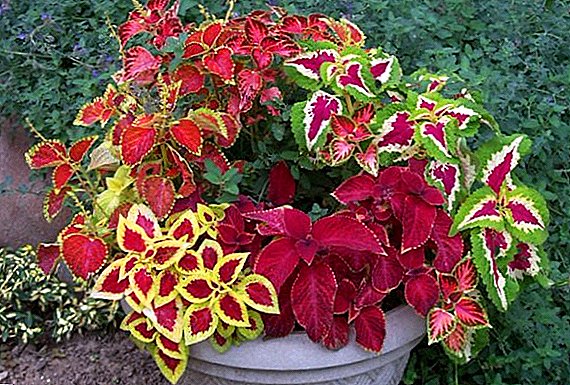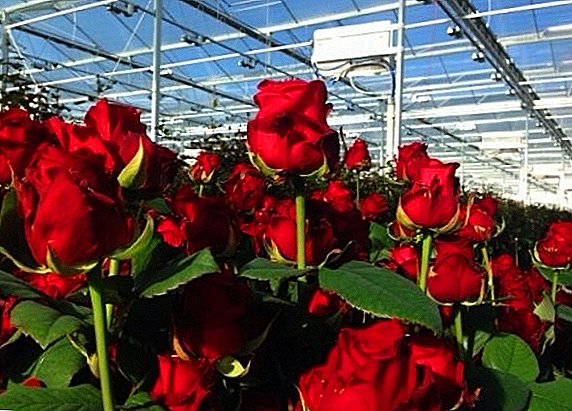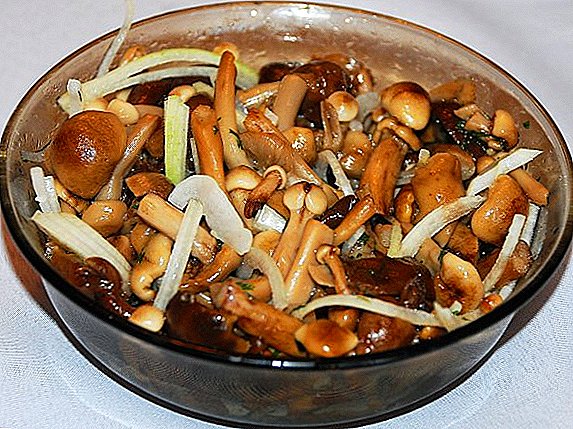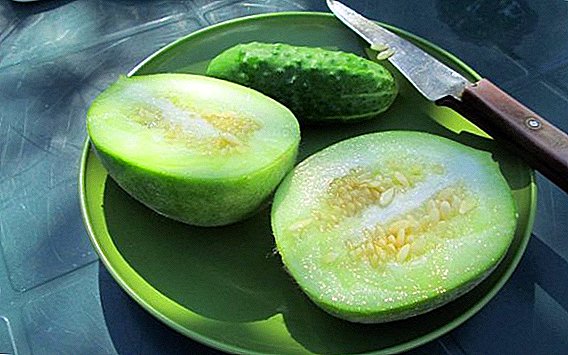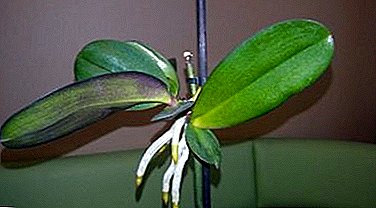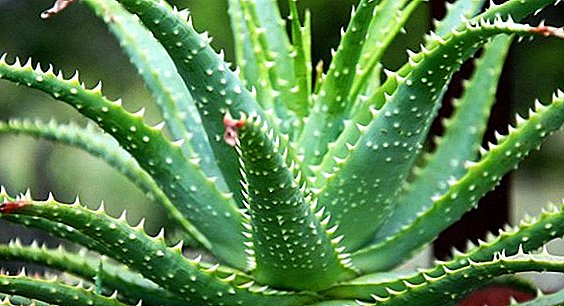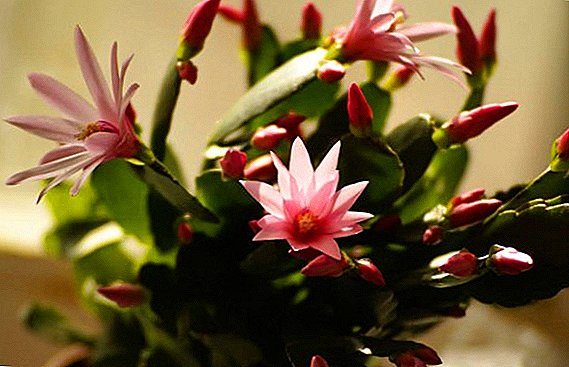 Schlumbergera Zigokaktus - the original indoor flower, better known as the Decembrist or Christmas Tree, is a representative of forest cacti, which at home pleases with abundant and long flowering in winter. However, the pledge of a beautiful flowering plant is considered competent and timely transplant. What is it for, and how to properly conduct it, let's consider.
Schlumbergera Zigokaktus - the original indoor flower, better known as the Decembrist or Christmas Tree, is a representative of forest cacti, which at home pleases with abundant and long flowering in winter. However, the pledge of a beautiful flowering plant is considered competent and timely transplant. What is it for, and how to properly conduct it, let's consider.
What is a transplant?
The Decembrist refers to strongly branched plants that need regular transplantation. The need for such procedures is determined by several factors:
- Planting a flower after its purchase. Experts recommend that the purchased copies be immediately transplanted into a new container with a new substrate. This is especially true for crops that are located in flower shops in peat soil, which is unsuitable for permanent cultivation in the home. If you ignore the transplant process, the plant will gradually begin to deplete and may soon die completely.
- The presence of roots that look out of the drainage holes. Looking out of the roots of the pot indicates that the plant has completely filled the old container and it's time to change it to another, with a large diameter.

More than three years old Christmas tree is transplanted regularly every 3-4 years, using a transplant with a capacity of 2 cm more in diameter than the previous one. A young plant needs replanting every year.
It is recommended to replace the zygocactus in a new container at the end of February or the beginning of March, when it is completely faded. At this time, the plant begins to intensively increase the green mass, and such procedures will be tolerated easily. During the summer, the flower will be able to form new segments-leaves and successfully prepare for the winter bloom.
Did you know? A large number will be associated with the Decembrist, the main of which is its timely flowering - if it blooms in December, then next year will be happy and successful, well-being will come to the family, sorrows and troubles will go away.
How to transplant a Decembrist into another pot
The technology of transferring the Decembrist to a new pot is not much different from the classical transferring, although it has some peculiarities.
When can be transplanted
As mentioned above, transplanting a Christmas flower is required in two main cases: after purchasing at a flower shop and in the presence of peeping root processes from drainage holes. In rare cases, an emergency transplant may be necessary due to the development of a disease.  It is recommended to start transplanting events immediately after the flowering of the crop - in the last weeks of February or in early March. By this time, the potted substrate is depleted and it will be helpful to replace it with fresh. Experts do not advise disturbing the culture in other months, since transplanting a Decembrist in the fall or summer may provoke a fall in foliage and a complete lack of flowering in December.
It is recommended to start transplanting events immediately after the flowering of the crop - in the last weeks of February or in early March. By this time, the potted substrate is depleted and it will be helpful to replace it with fresh. Experts do not advise disturbing the culture in other months, since transplanting a Decembrist in the fall or summer may provoke a fall in foliage and a complete lack of flowering in December.
In which pot
When choosing a pot, it is necessary to take into account the fact that the flower belongs to epiphytes and does not form a too dense root system. The plant forms superficial roots, which rarely reach the bottom of the tank. For this reason, one should select a shallow, but not too wide, pot, which is only 2-3 cm larger than the old one. Too wide packaging will contribute to the intensive development of root processes and inhibition of the bud formation process.
Important! A transplant for a plant is a big stress, so immediately after its implementation it needs to organize comfortable conditions.
The best solution will be containers made from:
- ceramics or clay;
- glass;
- wood;
- plastic.

Soil selection and preparation
Rozhdestvennik is a representative epiphytic plants with surface roots, whose natural habitat are the tropics. That is why a light, loose substrate with a pH level of pH from 6.5 to 7.0 and a high content of nutrients is selected for it.
Learn more about how to properly plant and care for the Decembrist at home.
It is possible to purchase a special soil for planting a flower intended for cacti, or to prepare a soil mixture yourself at home from:
- leaf earth - 6 parts;
- sod soil - 1 part;
- humus - 4 parts;
- peat - 2 parts;
- river sand - 2 parts;
- crushed charcoal - 10%;
- broken brick or ground clay - 10%.
 The source of nutrients in this substrate are sod and leaf earth. Charcoal is used to disinfect the mixture, and expanded clay or brick is used to create drainage and good breathability.
The source of nutrients in this substrate are sod and leaf earth. Charcoal is used to disinfect the mixture, and expanded clay or brick is used to create drainage and good breathability.Important! Obligatory properties of quality soil for zygokaktus are looseness and good breathability.
Home-made soil needs to be sterilized, which can be done using several simple methods:
- warm the earth for 15–20 minutes in an oven at + 180 ° C;
- shed the substrate is not very concentrated solution of potassium permanganate and thoroughly dried;
- arrange the soil for one day in the freezer.
Drainage
The organization of a quality drainage layer when planting a plant is imperative. Drainage should occupy 1/3 of the total pot volume. As a material for creating a drainage layer, it is recommended to use brick chips, fine expanded clay, river pebbles, crushed pebbles, etc.  If materials from the street are used, they must be calcined in the oven for several minutes in order to destroy the causative agents of various ailments. The presence of a drainage layer will prevent the stagnation of water in the pot, increase the breathability of the soil and thereby protect the root system of the flower from rotting.
If materials from the street are used, they must be calcined in the oven for several minutes in order to destroy the causative agents of various ailments. The presence of a drainage layer will prevent the stagnation of water in the pot, increase the breathability of the soil and thereby protect the root system of the flower from rotting.
Tools for work
In the process of transplanting the Decembrist, the following tools and materials will be needed:
- sharp knife;
- several old newspapers;
- capacity for transplantation;
- rubber gloves to protect your hands.
Important! In the autumn, before flowering, experts recommend treating the plant with a solution of fungicides to protect it from the negative effects of fungi and parasites.
Step-by-step process
Zygocactus transplantation measures are not particularly difficult, but require accuracy and scruples.
The process is to perform simple steps:
- A layer of drainage is filled in the previously prepared container, which is 1/3 of the entire space of the pot.
- On top of the drainage layer, the substrate is filled to a height of not less than 1 cm, leveled.
- Spread on the floor in several layers of the newspaper.
- From the old pot, shallowly loosening the soil at the edges with a knife, carefully, using a transshipment method, take out the plant, place it on the newspapers.
- The root system is cleaned from the old substrate, while removing only the soil that is easily separated.
- Conduct a visual inspection of the root processes, if necessary, get rid of dry, rotten, weak or damaged roots.
- The plant is placed in a new container, very carefully sprinkled with the substrate.
- Soil rammed a little, the surface is moistened.
- After transplantation, the flower is determined to a permanent place of growth.
Video: Decembrist transplant
Further care
The success of the Decembrist's transplantation will largely depend on the further care of the flower, which consists in following important rules:
- Location and temperature. Immediately after transplantation culture needs rest and rest. At this time, it is necessary to maintain the temperature in the room at the mark of + 13 ... + 15 ° С, water as necessary, completely abandon dressing. This regime should be observed for about a month until the flower is fully adapted to the new conditions. Next, the pot with zigocactus is recommended to be placed in the penumbra, where there are no direct sunlight and drafts. The south or southwest side is not suitable for him. The best option will be the windowsills in the east. You can install the plant in a well-lit place, with a diffused light, but protected from direct sunlight. As for the temperature parameters, the flower is perfectly related to average room temperatures within + 18 ... + 25 ° С. During the rest period before and after flowering, the indicators are recommended to be reduced to + 12 ... + 16 ° С. Note that the ideal temperature for the Christmas tree is the range of + 16 ... + 18 ° C.
- Watering. Decembrist moistening schemes will be determined by the periods of its vegetation. During active flowering, the plant is particularly in need of moisture, and therefore requires frequent and abundant watering. At the same time it is necessary to ensure that the soil stays slightly wet. After flowering, the Christmas tree is moistened regularly, focusing on the condition of the soil — its upper layer should dry approximately 2 cm. Irrigation measures are carried out using distilled, soft water at room temperature.
- Humidity. Zigokaktus prefers high humidity, so when the air is dry, he needs to organize regular spraying with warm water. In the summer you can arrange a flower shower or place the pot in a pan with water.
- Feeding. In the process of development, the plant needs systematic feedings, in which quality any liquid mineral complexes intended for decorative leafy crops are perfectly suited. In the spring, fertilizers are applied once a month, in the summer - 2 times a month. In the autumn, before starting the formation of buds, it is advised to stop feeding.
Important! Do not fill the pot with soil to the very edges. After watering, when the water is absorbed, the ground will sit down a bit and you can fill it up.
Answers to user questions
In the process of growing a Decembrist, beginning flower growers often encounter various problems associated with transplanting, breeding, and caring for them. To avoid mistakes, experts advise to adhere to several basic rules.
Do I need to replant after purchase
A plant purchased from a flower shop needs to be transferred to a new container with full replacement of the substrate. The fact is that in specialized stores the Decembrist is planted in peat soil mixture, which is not suitable for the constant cultivation of a flower at home. Shop soils are suitable for greenhouse breeding. If you ignore the transplant, the Christmas tree will respond with withering, dropping leaves and a complete lack of flowering. 
Is it possible to replant blooming Decembrist
A flowering Christmas tree reacts negatively even to the slightest environmental changes, which is why it is not recommended to transplant it during flowering. Experts also do not advise disturbing the plant several weeks before flowering, as it will take time to adapt, which will adversely affect the formation of buds. In case of emergency it is allowed to transplant the crop 2 months before the beginning of the flowering phase.
Learn more about the recommendations for caring for the Decembrist flower at home.
How to split a plant
It is quite easy to divide the Christmas tree, even an inexperienced florist is able to cope with this. It is recommended to carry out separation measures immediately after the flowering of the crop. To do this, at the moment when new segments begin to grow, unscrew the cuttings, which formed 2-3 full leaf segments, in a clockwise direction.
It should be noted that these cuttings are formed after each annual crop. For rooting, they are placed in water or a previously prepared substrate, they organize the greenhouse effect. A month later, the cutting rooted and it can be transplanted into a separate container. For seedlings it is very important to maintain the temperature at + 25 ° C and a sufficient level of humidity. 
Why the plant does not take root
The reasons that the Decembrist after transplantation is poorly taken root or does not take root at all can be:
- improperly selected substrate;
- damage to root processes during transplantation;
- high soil moisture, stagnant water at which root decay occurs;
- too high temperatures in the room;
- sudden changes in temperature at which the plant begins to shed its leaves;
- lack of nutrients necessary for the full development of the root system;
- flower stress associated with impaired basic nursing conditions;
- various ailments and parasites that take away the vitality of the plant;
- change in conditions after transplanting.
Did you know? In ancient times, they believed that the Christmas tree was endowed with unique properties to fill the hearts of callous and cruel people with love and tenderness. It was specially grown to "melt" the coldest heart.
By providing the Decembrist proper and timely care, it is possible to achieve violent and abundant flowering throughout the winter period. Growing a flower is not particularly difficult, but for the normal development of a zygocactus, it is recommended to take into account the main processes of its life cycle.



